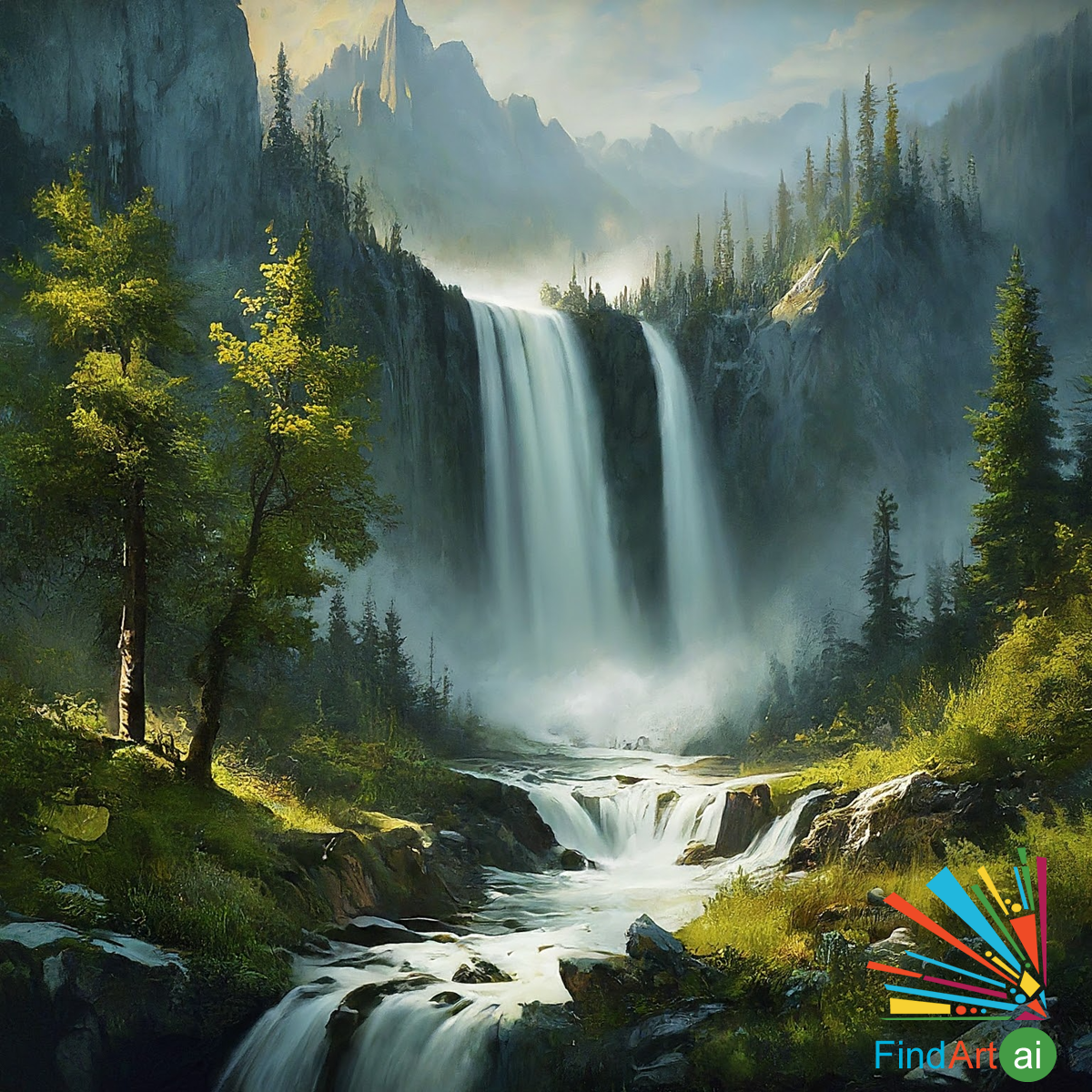Romanticism
Romanticism painting is an artistic movement that emerged in the late 18th and early 19th centuries as a reaction against the rationalism and order of Neoclassicism and the Enlightenment. Romantic painters emphasized emotion, imagination, and the sublime power of nature, often focusing on individual experience and the intense, dramatic aspects of life. They sought to express personal feelings and explore the mysteries of the human soul, celebrating the beauty and unpredictability of the natural world.
Key Characteristics of Romanticism Painting
- Emphasis on Emotion and Imagination:
- Romanticism placed a strong emphasis on conveying deep emotions and exploring the inner world of human feelings, often through dramatic, powerful imagery. Paintings were meant to evoke emotional responses rather than adhere to strict rules of form and composition.
- Example: Eugène Delacroix’s Liberty Leading the People, which vividly conveys the emotion of revolution, passion, and struggle through its dynamic, dramatic composition.
- Focus on the Sublime and Nature:
- Romantic painters often depicted the grandeur, awe, and terrifying beauty of nature, portraying it as a powerful, uncontrollable force. The sublime—moments when nature’s vastness overwhelms the human experience—was a key theme in Romanticism.
- Example: Caspar David Friedrich’s Wanderer above the Sea of Fog, where a lone figure stands atop a mountain, gazing into an expansive, mist-covered landscape, capturing the sense of wonder and insignificance in the face of nature.
- Interest in the Exotic and the Supernatural:
- Romanticism was fascinated by the mysterious, exotic, and supernatural. Artists often drew inspiration from faraway lands, medieval legends, and the supernatural realm, creating works filled with drama and fantasy.
- Example: Théodore Géricault’s The Raft of the Medusa, which depicts the harrowing tale of shipwrecked survivors, blends a real event with exaggerated emotional intensity and a sense of tragic grandeur.
- Dramatic Lighting and Contrast:
- Romantic painters frequently used dramatic contrasts of light and shadow (tenebrism) to heighten the emotional intensity of their works. Strong lighting often highlighted key elements, creating a sense of mystery or danger.
- Example: J.M.W. Turner’s The Slave Ship, where the intense light of the setting sun contrasts with the tumultuous, stormy sea, creating a vivid sense of drama and impending disaster.
- Rejection of Classical Order and Restraint:
- Unlike the balanced, orderly compositions of Neoclassicism, Romantic paintings are often more chaotic and fluid, with swirling, energetic forms and an emphasis on movement. Romantic artists rejected the strict rules and rationality of classical art in favor of more expressive and unrestrained approaches.
- Example: Delacroix’s The Death of Sardanapalus, which is filled with chaos, motion, and vibrant colors, depicting the dramatic destruction of a king’s palace.
- Depiction of Heroic, Individual Experiences:
- The Romantic movement celebrated the individual, often depicting heroic or tragic figures standing against overwhelming odds. These figures are typically portrayed as solitary and deeply emotional, embodying the Romantic ideal of individualism.
- Example: Géricault’s The Raft of the Medusa, where the survivors of a shipwreck are portrayed in an emotional and heroic struggle for survival, emphasizing human endurance.
- Rich, Expressive Color Palette:
- Romantic painters often used bold, vibrant colors to heighten emotional impact and create a sense of drama. The color palette was not necessarily realistic but was intended to convey the mood and emotional tone of the scene.
- Example: Turner’s Rain, Steam, and Speed, where swirling, intense colors dominate the scene, capturing the raw energy of the modern industrial world.
Common Themes in Romanticism Painting
- The Power of Nature: Nature is often depicted as vast, overwhelming, and indifferent to human existence. Storms, mountains, and wild landscapes are recurring motifs.
- The Sublime: Romantic painters sought to capture the sublime—feelings of awe, terror, and wonder inspired by the natural world or powerful human experiences.
- Emotion and Individualism: Paintings often focus on personal, emotional experiences or dramatic historical events, celebrating the heroism or tragedy of the individual.
- The Supernatural and Exotic: Fascination with the supernatural, folklore, medievalism, and exotic locales was common, often used to escape the ordinary or rational.
Famous Romantic Painters and Works
- Eugène Delacroix:
- A leading figure of French Romanticism, Delacroix’s works, such as Liberty Leading the People and The Death of Sardanapalus, are known for their vibrant colors, dramatic compositions, and emotional intensity.
- Caspar David Friedrich:
- A German Romantic painter, Friedrich is renowned for his landscapes that explore the sublime in nature. His work Wanderer above the Sea of Fog symbolizes the individual’s confrontation with the vastness of nature.
- J.M.W. Turner:
- Turner was a British Romantic painter known for his atmospheric and often tumultuous seascapes, as seen in works like The Slave Ship and Rain, Steam, and Speed, where nature is depicted with swirling, dynamic energy.
- Théodore Géricault:
- Géricault’s most famous painting, The Raft of the Medusa, captures both the horror and heroism of a shipwreck, blending Romantic themes of tragedy, emotion, and the power of nature.
- Francisco Goya:
- Though often associated with Romanticism, Goya’s works, such as The Third of May 1808, reflect the darker, more pessimistic side of the movement, depicting human suffering, violence, and the horrors of war.
Romanticism painting is defined by its focus on emotion, imagination, and the sublime, often portraying the power and beauty of nature in a dramatic and expressive way. Romantic artists rejected the rationality and order of Neoclassicism, choosing instead to explore the inner world of human emotion, the mysteries of the supernatural, and the awe-inspiring grandeur of the natural world. Through vibrant colors, dynamic compositions, and intense contrasts, Romantic paintings evoke powerful feelings of awe, heroism, and sometimes, tragedy.
Romanticism Paintings with The Power of Nature Theme
Romanticism paintings with the Power of Nature theme highlight the grandeur, beauty, and terrifying ...

